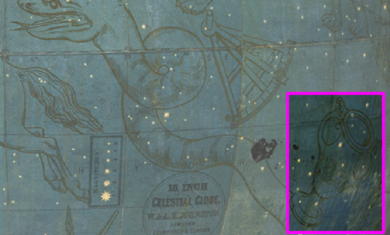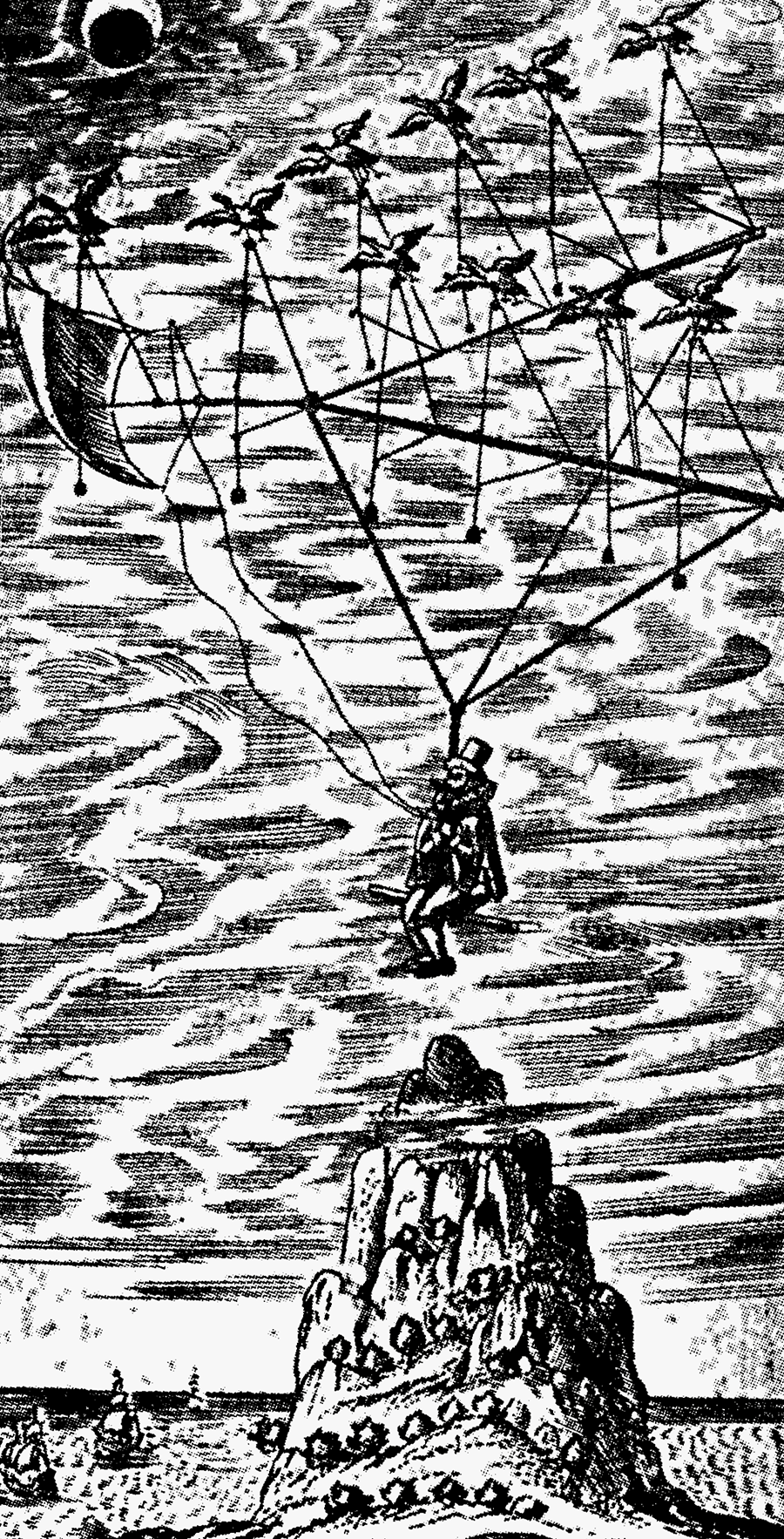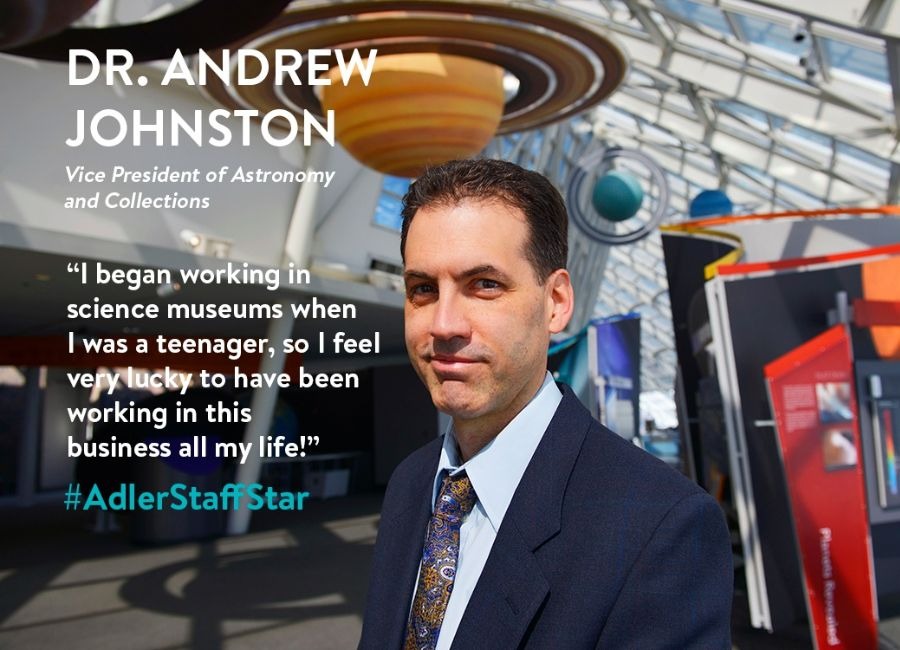Americas’ Courtyard, Stargazers Hub, and the Intersection of Art and Science

Header image: Americas’ Courtyard, a stone sculpture outside the Adler Planetarium in Chicago, Illinois on a sunny day.
Humans have been finding unique ways to look up and connect with the universe for tens of thousands of years. If you’ve ever been to the Adler, you’ve seen the dozens of ways we share the wonders of sky observing—with our collection of rare artifacts, our 360 degree sky shows, or even stargazing through the Doane Observatory.
But have you ever noticed the stone sculpture outside the museum? This sculpture, known as Americas’ Courtyard, pays homage to humankind’s love of looking up to the sky and offers a physical space for individuals to play, interact, and connect with the cosmos and one another.
What is Americas’ Courtyard?

America’s Courtyard was created by Brazilian artists Denise Milan and Ary Perez in 1998. The piece was originally established near the Art Institute of Chicago, and was arranged in three, perfectly concentric circles. In 1999, the piece moved to our own backyard—the south end of the Adler Planetarium’s peninsula. During the move, its shape—and meaning—expanded.
According to Milan, the sculpture was designed to be mutable—never fixed in one specific position, rather a living, moving piece. This allows space for creativity and imagination, for both the artists and the viewers alike.
Connecting to the Cosmos
When Dr. Phyllis Pitluga, former Adler astronomer, saw the concept drawings, she recognized a cosmic connection. When the concentric circles of the original design loosened and opened on each end, it resembled a spiral galaxy. Just like our very own home galaxy, the Milky Way.
In its new home, Americas’ Courtyard took on this new, galactic shape that was only fitting for the first planetarium in the Western Hemisphere.
This artistic connection to the cosmos was more than simply serendipitous. Milan says that Americas’ Courtyard was inspired by the Mayan Observatory in Chichen Itza, El Caracol. El Caracol is an ancient observatory in the Yucatan Peninsula, where it is believed Mayans studied both astronomy and cosmology. 20 sightlines for astronomical events such as solstices, equinoxes, and eclipses are built into the stone structure.

Americas’ Courtyard echoes El Caracol with not only its circular structure, but also with its sightlines. On the summer and winter solstices, you can find the Sun rising and setting perfectly between the main stone pathways of the sculpture.
Milan and Perez also drew inspiration from the huacas of Peru—natural or manmade stone monuments that align with the stars. Huacas create a philosophical pathway between Earth and the sky.
Both El Caracol and Peruvian huacas offer social spaces for humans to discover the heavens, share stories, and develop culture related to astronomy.
Channeling the inspiration from these sacred, astronomical spaces, Milan calls the piece “a bridge between the Earth and the cosmos.” The sculpture provides a physical landscape for us to participate in the astronomical and artistic process in a way that is natural to each individual.
Milan says that the sculpture represents the “wider, existential journey” of humankind. The malleability of the piece reflects the constant movement of Earth and space, and reminds us that we “don’t need to be rigid at any moment,” Milan says. Without rigidity, one can find the space to explore, play, grow, and connect.
Breaking Down Barriers between Art and Science

Milan and Perez’s work also highlights the intersection of art and science, which, according to Milan, aren’t so different. “[Americas’ Courtyard] connects art and science, it connects Earth and the heavens… People separated art and science because we want a system where you have boxes. In reality, when you go to the source of things, there are no boxes—everything is in unison.”
Breaking down these barriers—or boxes—isn’t something that’s new to Milan, nor to the Adler. “I always try to eliminate boundaries. It’s not that the boundaries don’t exist, but it’s a practice of seeing boundaries not as something to separate, but something that can bring [things] together,” Milan says.
The construction of Americas’ Courtyard is a perfect illustration of breaking down the barriers between art and science, which are often viewed as opposites. From the engineering needed to harvest the stones, the geology involved in choosing and shaping them, to the mathematics that created the design, and the astronomy guiding the sightlines, a lot of disciplines went into this seemingly simple stone sculpture.
The process captures how art and science don’t belong in separate boxes. Rather, they are overlapping mediums that achieve the shared purpose of discovery and creation.
Reconnect with the Cosmos in Stargazers Hub

We are proud to have such a beautiful example of STEAM in action just outside our doors. And that’s why we tried to recreate that experience indoors, in our newest exhibit, Stargazers Hub. Stargazers Hub is an interactive, multisensory exhibit which unravels the mystery of astronomical toolmaking and illustrates the art of observation.
Americas’ Courtyard is just one of the many examples of sky observing tools that you can see in Stargazers Hub. Humans have used tools—like telescopes, sundials, and astrolabes—for generations to strengthen our relationship with the sky, and you can see our favorite curation of them for yourself in this new exhibit.
Just like Americas’ Courtyard, Stargazers Hub brings the idea of stargazing to life. Head over to our Cabinet of Curiosity to chat with our educators, open up our exhibit cases, and interact with the tools first-hand. Learn how storytelling is an integral part of sky observation, allowing us to have an emotional relationship with the cosmos.
Stargazing is much more than just looking up. It is about the relationship we develop with the universe, the memories a dark, starry sky evokes, the imagination it takes to spot something new, and the people you share these experiences with.
Come nurture your own relationship with the universe with Americas’ Courtyard and Stargazers Hub.







